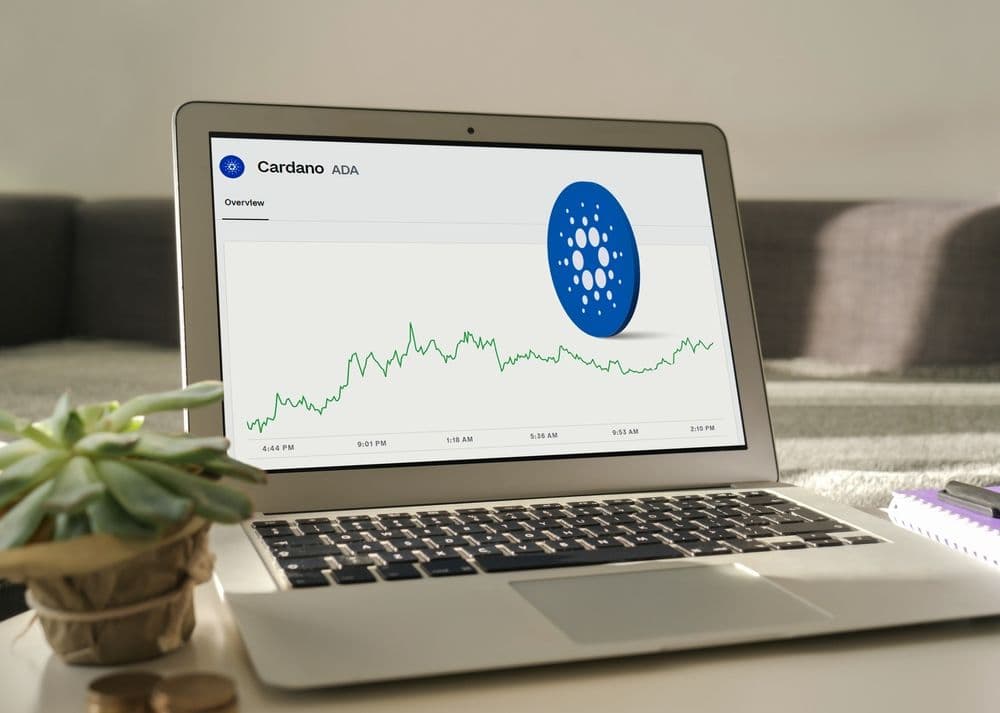Cardano’s co-founder, Charles Hoskinson, has sparked debate within the Cardano community by suggesting a significant shift in the ecosystem's strategy. Hoskinson has proposed converting $100 million worth of Cardano’s native token, ADA, into Bitcoin and stablecoins, aiming to enhance the decentralized finance and stablecoin sectors within the Cardano network.
This proposal, which was shared during a live YouTube stream, contrasts sharply with the perspective of Cardano Foundation CEO Frederik Gregaard, who has downplayed the importance of Total Value Locked as a key metric for adoption.
Hoskinson’s proposal involves converting a substantial portion of Cardano's treasury into a mix of stablecoins, including USDM and USDA, and Bitcoin. Specifically, Hoskinson suggested that $100 million worth of ADA could be allocated to these digital assets, which he believes would help propel Cardano’s growth in the DeFi and stablecoin sectors.
“We could take $100 million of ADA in the treasury, convert it to a blend of stablecoins incumbent in Cardano, so USDM and USDA, and convert some of it into Bitcoin to prime Bitcoin DeFi,” Hoskinson explained. The goal behind this move would be to increase the ratio of stablecoin issuance and TVL in Cardano’s ecosystem to between 30% and 40%, up from the current 10%, which Hoskinson believes will drive Cardano’s competitiveness in the market.
Cardano’s TVL currently stands at $356 million, with only $31 million of stablecoins minted on-chain according to data from DefiLlama. This is in stark contrast to networks like Solana, which boasts $9.8 billion in TVL and $11 billion in minted stablecoins on-chain.
Hoskinson’s rationale for converting ADA to Bitcoin and stablecoins is twofold: to increase the liquidity and utility of Cardano’s DeFi sector and to build out a more robust ecosystem of stablecoins. He noted that such a move would not only benefit the DeFi ecosystem but would also generate non-inflationary revenue for Cardano, which could be reinvested into the network.
Hoskinson vs. Gregaard on TVL and Cardano’s Focus
While Hoskinson’s proposal received attention for its boldness and potential to drive growth, it has also created a rift between him and Cardano Foundation CEO Frederik Gregaard. Gregaard has consistently stated that TVL is not a key metric for Cardano’s adoption and long-term success.
In an interview with CoinDesk earlier this year, Gregaard emphasized that Cardano's focus should be on the long-term utility of the ecosystem, rather than on short-term figures like TVL.
"TVL is not a metric I use for adoption," Gregaard stated. "Our focus is on building real-world applications and providing infrastructure for developers and users. The true value of Cardano is not reflected in TVL alone but in the actual use cases and the technology we are enabling."
This view contrasts with Hoskinson’s, who believes that increasing TVL and stablecoin adoption is vital for Cardano’s success. He has been outspoken about the importance of creating a more robust and competitive DeFi ecosystem on Cardano, which he believes will ultimately drive adoption and bring more liquidity to the network.
Stablecoins: A Central Focus in Hoskinson’s Proposal
Stablecoins have become an increasingly important aspect of the broader crypto ecosystem, serving as bridges between the volatile world of cryptocurrencies and the stability of fiat currencies. Cardano has seen slow growth in stablecoin adoption compared to other blockchain networks like Ethereum and Solana, and Hoskinson’s proposal aims to address this gap.
By converting ADA into Bitcoin and stablecoins like USDM and USDA, Hoskinson believes that Cardano can tap into the growing demand for decentralized stablecoins while boosting its DeFi ecosystem. He is particularly focused on the use of stablecoins in cross-border payments, e-commerce, and decentralized finance, where Cardano could become a leading player.
The use of Bitcoin as a reserve asset in the Cardano ecosystem is also noteworthy. Bitcoin has established itself as a store of value and a key asset in DeFi, and integrating Bitcoin into the Cardano ecosystem would strengthen the network’s position within the broader crypto market.
Hoskinson sees this as an opportunity to attract institutional investors who are already heavily involved in Bitcoin and may be interested in expanding into Cardano’s ecosystem.
Impact on ADA Price
One of the most contentious aspects of Hoskinson’s proposal is the concern over how converting $100 million in ADA to stablecoins and Bitcoin might impact the price and liquidity of ADA. Some critics have raised the concern that such a large-scale sale of ADA could depress its price and create volatility in the market.
Hoskinson dismissed these concerns, calling critics “inexperienced” and asserting that the conversion would not create any liquidity issues. "This move would not cause any problems at all," Hoskinson said, responding to criticisms about the potential market impact. He emphasized that the long-term benefits of increasing liquidity in Cardano’s DeFi ecosystem would outweigh any short-term volatility caused by the conversion.
However, some analysts are skeptical of the potential consequences for ADA’s price, particularly given the size of the proposed transaction. The market's reaction to such a move could significantly influence Cardano’s price trajectory in the coming months.
The Future of Cardano and Its DeFi Ecosystem
The focus on stablecoins, DeFi, and liquidity will likely play a central role for Cardano ecosystem in its future development. Hoskinson’s proposal to swap ADA for Bitcoin and stablecoins represents an attempt to increase Cardano’s presence in the competitive DeFi landscape, particularly as other blockchains like Ethereum, Solana, and Binance Smart Chain continue to dominate in terms of liquidity and TVL.
The success of Hoskinson’s plan will depend on several factors, including regulatory considerations, the broader market conditions for stablecoins, and the continued development of Cardano’s DeFi infrastructure. If successful, the plan could position Cardano as a serious player in the decentralized finance space, with a more robust and liquid ecosystem.
At the same time, Gregaard’s focus on building real-world use cases for Cardano could ensure that the network remains focused on long-term sustainability, even if short-term metrics like TVL and stablecoin adoption don’t show immediate growth.

